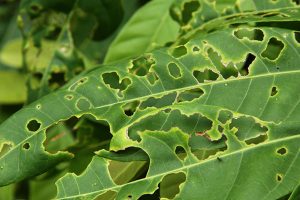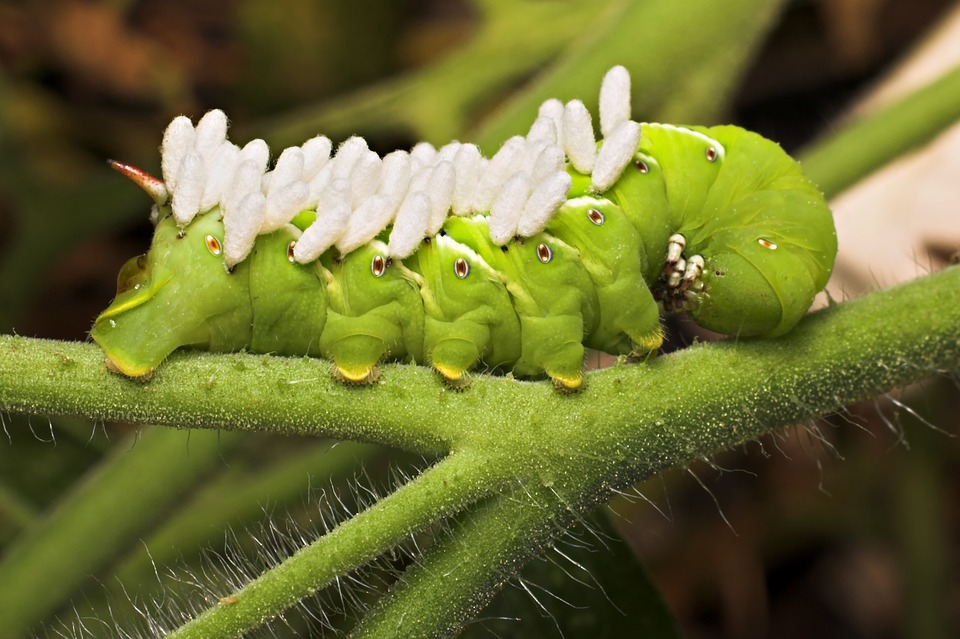The moment you spot worms in your tomato crop is something you always keep in mind. These worms can be up to 10.16 cm long and grow up to a finger’s thickness, and they have curved back horns. There are two types of worms that are a problem for gardeners growing vegetables: tomato worms and tobacco worms. Tomato worms are more common in the north, and tobacco worms are widespread in the south, but their territories and the crops they feed on often correspond. These ravenous pests are frequently seen in the same area of the garden.
Spot the Worms
In general, the first sign of a worm infestation is the finding of leafless tomato plants because these large pests, known for their voracity, cause severe damage – and rapidly! These worms favor tomatoes and other plants of the same family, including tobacco, potatoes, peppers, and eggplant. And it’s not enough for them to make a few holes while feeding; they will eat entire leaves at night and even devour flowers and fruit, with the upper part of the plant being the first to be bitten by this pest.

Disguised by their fresh green color, tomato and tobacco worms melt into stems and leaves, and even when damage is severe, these small culprits can go unnoticed by hiding quickly in plants during the day. Catch active worms at dusk, dawn, or night, when these pests come out to feed openly. The large black droppings they leave on leaves and in the soil also help find where they hide. Besides, this pest is also known to expose itself if leaves are vigorously sprayed with a garden hose.
Consider the Behavior of the Parasite
Tomato and tobacco worms are the early larval phase of the big moths. Tomato worms have a black horn on the back with white V-shaped markings pointing forward along the bright green sides. Tobacco worms have a red horn on the back and white diagonal stripes on the sides.
These worms’ adult form is known in the region as the sphinx, hawk moth or hummingbird. These large moths appear in late spring and drop their eggs on plants throughout the night. Under optimal conditions, an adult moth can produce up to 2,000 eggs. The worms hatch in less than a week and then feed tirelessly on your vegetables for a month, so with a life cycle of 30 to 50 days, it is common to find two or more generations in the same season.
Eliminate Problems Caused by Worms
An effective way to control these pests is to catch these worms by hand and drown them, but logically this is possible if you find them while your plants are still alive. You can without difficulty control these worms with some insecticides. Some of them are ready-to-use make it easy to treat specific plants and pests with a concentrated spray. Some treatments also come with pump sprayers, which are ideal for treating larger areas.

We recommend using “non-systemic” insecticides, in other words, products that do not penetrate plants or plant tissue. Instead, they remain on top and kill the worms on contact. You can treat your tomatoes and many of your favorite vegetables until the day before harvest. Follow the label instructions and the information on the intervals between application and the day of harvest.
Prevent Future Invasions
Worms overwinter in the soil during the nymphal or pupa stage before transforming into moths in the spring, which is the beginning of the worm problem when the moths lay their eggs. By plowing your garden after harvest and again in early spring, you will eliminate 90% or more of the pests that overwinter in the soil and reduce worm problems the following year.
Natural beneficial insects, which are part of a comprehensive pest control program in allotments, also help to control worms. Beneficial parasitic wasps lay eggs that, at birth, feed on the worms where they are housed, they weave small cocoons, and then new wasps are born, ready to take on other worms. If you see a worm covered with a little silky cocoon, it indicates that the worm will no longer cause problems. Leave the cocooned worms in your garden until the warnings hatch, and you will have a natural army of beneficial insects.
Have you ever encountered worms in your garden and were able to get rid of them using any other useful tips? We want to hear from you, so don’t forget to share your ideas with us in the comments below.



